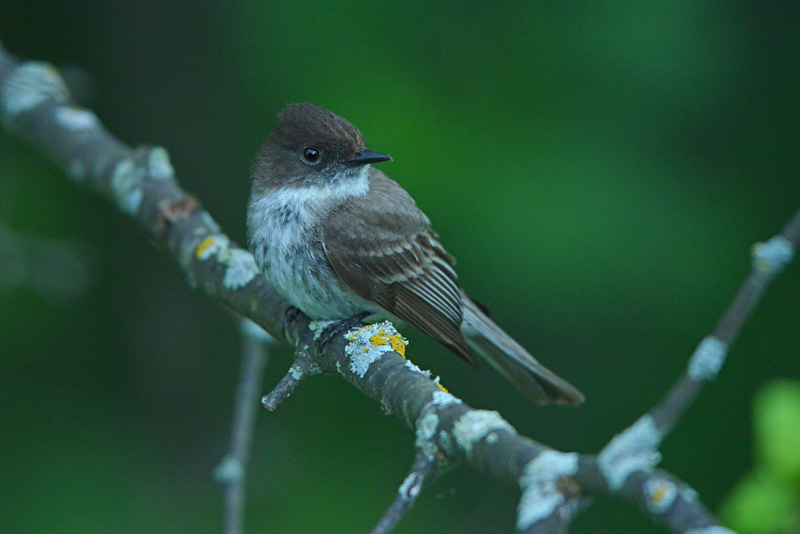
Photo and Commentary ©2024 by Robert Howson
Tuesday, April 16, 2024
It’s not a particularly elegant bird, patterned in shades of gray and white, but that doesn’t keep it from being a favorite of those who enjoy the company of birds. Perhaps that’s because of its willingness to spend time in close proximity to humans. For Eastern Phoebes have largely forsaken cliffs and banks as their preferred nesting locations and instead adopted manmade structures as the place to build their nests. Besides that, they winter farther north than most other flycatchers and are among the earliest of the migrants to return in spring. It’s almost like they are eager to return to our company. Of course, our friends in Central America would need to construct another account to explain their migration patterns that would match their thinking.
The Eastern Phoebe is a good example of a species which got its name from what we humans imagined its call to sound like. In truth, its call does come the closest of the three phoebe species found in North America to actually matching its name. And unlike most songbirds, this is not a learned song which they must hear in order to reproduce it themselves. Even young raised in isolation, without the benefit of hearing the song repeated, are able to render it perfectly.
Likewise, Solomon noted how God has placed within us a longing for closeness, an understanding of Him, that we didn’t have to learn in a class at church or school. He just made this an intrinsic part of us: “He has made everything beautiful in its time. He has also set eternity in the human heart; yet no one can fathom what God has done from beginning to end.” (Ecclesiastes 3:11 NIV)
In 1967, Chaim Potok’s novel The Chosen described the “burden” and “privilege” of being Jewish in America. As Christians, we too share in both responsibility and blessing of our choice to be a follower of Christ. And that makes us special.
